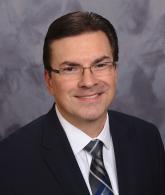Preparing residents for emergencies
As skilled nursing facilities (SNFs) that receive funding from the Centers for Medicare & Medicaid Services (CMS) begin to address enhanced rules on emergency preparedness, all sectors of long-term living and senior services should consider integrating comprehensive programs to improve planning, response and recovery capabilities to adverse events. While rules and regulations vary from state to state for other licensed and unlicensed levels of care including assisted living, supportive care and independent senior housing, robust crisis management and disaster planning programs should be a priority for every community.
As a consultant, my past training and experience as a deputy fire chief/fire marshal allow me to assist long-term living and healthcare clients with their safety and emergency management programs. From what I have seen nationwide, it is clear that this vulnerable sector of our population needs comprehensive programs that use an “All Hazards” approach, as promoted by federal emergency management initiatives, to help provide a safe and prepared environment. Utilizing an All Hazards approach will help organizations of all types get through challenging events that can range from a small fire, power disruption or missing resident to an uncontrolled wildfire, earthquake or monster hurricane.
The first step in implementing an All Hazards emergency management program is buy-in from ownership and senior management. The days of “it can’t happen here” are over. We know that catastrophic events—including acts of terrorism, as the world saw play out in San Bernardino, Calif., in 2015—can happen anywhere and without warning. Ownership and executive management of campus-based, multi-service communities like Continuing Care Retirement Communities (CCRCs), also called Life Plan Communities, must identify and acknowledge the potential for the various types of emergency situations that can occur.
Embracing an All Hazards approach means understanding the importance of emergency management processes like Hazard Vulnerability Assessments (HVAs) and trusted management protocols like the Incident Command System (ICS) and integrating them into every long-term living (LTC) community’s emergency operation plan, whether doing so is a requirement or not.
Addressing all of the complex components of a compliant, All Hazard emergency management program is not the intention, here. Instead, I will address just a few critical areas of a comprehensive program including training and drills involving residents of LTC communities.
Training the residents
A major variable in an All Hazards emergency management program is the human reaction to a crisis or disaster. Providing staff with training to help promote an appropriate response to an emergent situation is common in the workplace. But, what about the residents’ response to an emergency? How have they been prepared to react or respond appropriately when an adverse event occurs requiring them to either evacuate a building or shelter in place?
Providing basic situational awareness training to residents in senior communities is an essential part of a balanced All Hazards emergency management program. Excluding residents and their families or responsible parties from this process can lead to negative outcomes. Residents should know if the facility has developed operational plans to address all types of emergencies that can potentially occur consistent with the community’s HVA. Sharing this information with residents and their immediate family caregivers can provide positive levels of assurance.
Communities can promote this information to residents and their families (or responsible parties) in ways that reflect favorably on the community’s management and preparedness. For example, many of my CCRC clients engage me to present an informational program (typically one hour once a year) to their independent living residents to review the community’s life safety features and emergency management capabilities. LTC communities also may work with their local emergency response agencies like the fire department, emergency medical services provider and/or law enforcement to present this important information to their residents.
Providing residents with expectations in advance of an emergency can help alleviate confusion and unnecessary communications. For example, residents need to know the actions that they should take during a tornado warning. Residents who have not received instructions in advance of an emergency will end up calling the reception desk and clogging internal communication lines or sometimes call 9-1-1 to ask what they should do. Providing periodic situational awareness training sessions with residents should be a component of every long term living community’s Emergency Management program.
Practice, practice, practice
In addition to training, periodic drills and exercises are an essential part of a good All Hazards emergency management program. Involving residents is something that should always be considered when planning drills and exercises, but residents don't need to be involved in all the drills and exercises that staff members are required to complete. Most states require an annual evacuation drill in independent living environments or more frequent drills in assisted living homes and centers. Integrating the residents in the emergency preparedness dynamic is usually a recipe for success. Requiring them to participate without understanding expectations typically equates to an unhappy resident population. Utilizing a rehearsal approach to drills and exercises will let the residents know that is important to practice emergency procedures before a crisis or disaster strikes occurs.
Preparing the residents as well as the workforce in CCRCs and other senior properties with training, drills and exercises will not only meet compliance, but also will ensure a best-practices approach to All Hazards emergency management.
Stan Szpytek is the president of consulting firm Fire and Life Safety, Inc., in Mesa, Arizona, and is the Life Safety/Disaster Planning Consultant for the Arizona Health Care Association and California Association of Health Facilities (CAHF). Szpytek is a former deputy fire chief and fire marshal with more than 35 years of experience in life safety compliance and emergency preparedness. For more information, visit www.EMAllianceusa.com or e-mail Szpytek at Firemarshal10@aol.com.

Stan Szpytek is the president of consulting firm Fire and Life Safety, Inc., in Mesa, Arizona, and is the Life Safety/Disaster Planning Consultant for the Arizona Health Care Association and California Association of Health Facilities. Szpytek is a former deputy fire chief and fire marshal with more than 35 years of experience in life safety compliance and emergency preparedness. For more information, visit www.emallianceusa.com or email Szpytek at Firemarshal10@aol.com.
Related Articles
Topics: Executive Leadership , Regulatory Compliance , Risk Management









